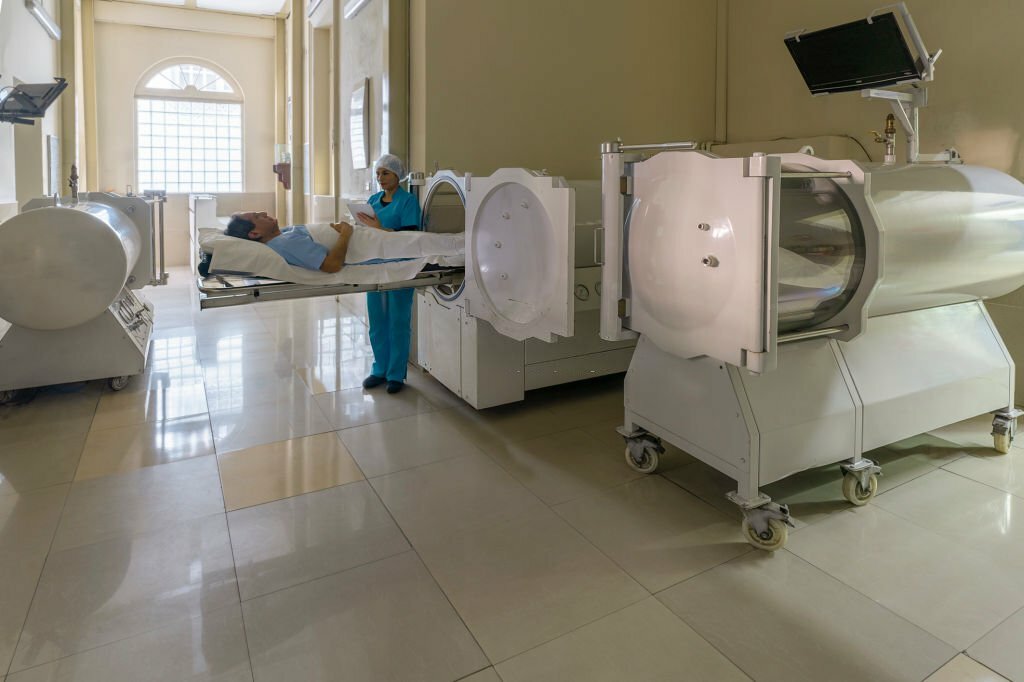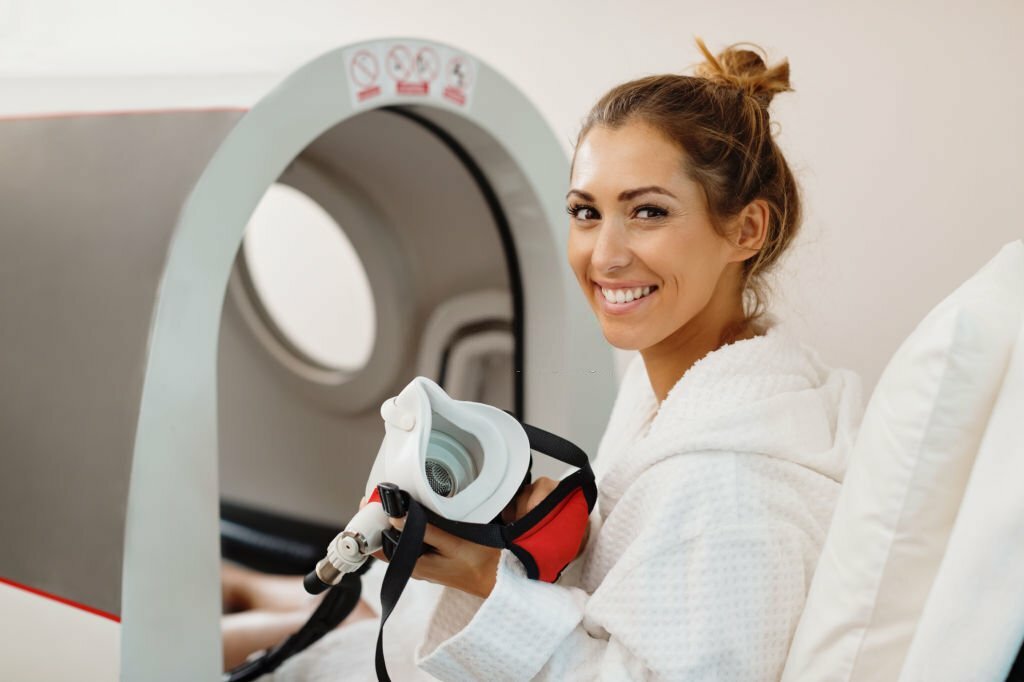In the evolving world of sports, athletes are constantly searching for approaches to gain a competitive advantage. A cutting-edge technology that has gained traction in recent years is hyperbaric oxygen therapy (HBOT), particularly through the utilization of hyperbaric oxygen chambers.
These chambers, initially associated with applications, have now become a part of athletes’ training and recovery routines across various sports.
This article explores the influence of oxygen chambers on sports performance by examining how they are reshaping the landscape of athletic recovery.
Understanding Hyperbaric Oxygen Therapy
Hyperbaric oxygen therapy involves inhaling oxygen within an environment, generally inside specially designed chambers. The increased pressure enables the body to absorb oxygen compared to atmospheric conditions.
Originally developed for purposes such as treating decompression sickness and facilitating wound healing, hyperbaric oxygen therapy has found its way into the realm of sports, presenting advantages for athletes.
Accelerated Recovery and Reduced Inflammation
One way in which hyperbaric oxygen chambers revolutionize recovery is by expediting the healing process. Intense physical activity often leads to microtrauma in muscles and tissues, resulting in inflammation.
The pressurized environment inside a hyperbaric chamber helps deliver oxygen to damaged tissues, which promotes healing and reduces inflammation.
This quicker recovery is especially important for athletes who participate in high-impact sports or repetitive training, where the risk of overuse injuries is common. By incorporating oxygen therapy into their recovery routines, athletes can potentially minimize downtime caused by injuries. Maintain their peak performance levels.
Addressing Delayed Onset Muscle Soreness (DOMS)
After training sessions or competitions, athletes often experience Delayed Onset Muscle Soreness (DOMS). Hyperbaric oxygen chambers have shown promise for alleviating the effects of DOMS.
The increased levels of oxygen delivered to the muscles during a session may help relieve soreness and stiffness, enabling athletes to recover and resume training at optimal intensity.
Boosting Cellular Regeneration and Repair
At the level of hyperbaric oxygen therapy, it stimulates the production of growth factors. Promotes angiogenesis. The formation of new blood vessels. This increased cellular activity contributes to tissue repair and regeneration.
Athletes recovering from injuries, surgeries, or strenuous workouts can benefit from the effects provided by hyperbaric oxygen chambers, potentially reducing their recovery time.
Enhancing Oxygen Utilization and Energy Production
Having oxygen is crucial for energy production in the body. Hyperbaric oxygen therapy is known to increase the amount of dissolved oxygen in the bloodstream, which leads to oxygen delivery to cells and enhanced energy metabolism.
This can result in improved endurance and stamina, allowing athletes to push their limits during training and competitions.
Cognitive Benefits and Mental Recovery
Apart from abilities, cognitive function and mental sharpness also play roles in athletic performance. Hyperbaric oxygen therapy has shown promise in enhancing function and reducing the impact of concussions related to sports.
The increased levels of oxygen can support brain health, aiding in recovery and resilience, which are vital for athletes who face the mental demands of their respective sports.
Integrating Hyperbaric Oxygen Chambers into Training Regimens
To make the most of oxygen therapy, it is crucial for athletes at all levels—from amateurs to professionals—to seamlessly integrate chambers into their training and recovery routines. Here are some suggestions on how they can do that:
- Personalized Treatment Plans: Working closely with healthcare professionals who specialize in oxygen therapy is essential for athletes. Together, they can create customized treatment plans that take into account an athlete’s training intensity, recovery needs, and any existing health conditions.
- Timing and Frequency: Optimizing the timing and frequency of hyperbaric sessions is key for benefits. Some athletes might find it beneficial to have training sessions that increase the amount of oxygen available during workouts, while post-training sessions can help speed up the recovery process. It’s important to strike a balance based on needs in order to maximize the benefits of this therapy.
- Consistency is Key: Consistency is crucial when it comes to training in general. Athletes should stick to a schedule of hyperbaric sessions in order to experience the advantages for recovery, performance, and overall well-being.
- Rehabilitation and Injury Prevention: Hyperbaric oxygen therapy can play a role in rehabilitation after injuries. Athletes who are recovering from surgeries or dealing with conditions may discover that this therapy speeds up healing and enhances recovery. Additionally, regular use of hyperbaric chambers may help prevent injuries by maintaining optimal tissue health.
- Holistic Recovery Approach: It’s important for athletes to view oxygen therapy as part of an approach to recovery. By combining sessions with modalities such as massage, cryotherapy, and proper nutrition, they can create a comprehensive strategy that addresses different aspects of athletic performance.
The Future of Hyperbaric Oxygen Chambers in Sports
Looking ahead, the role of oxygen chambers in sports performance is expected to continue evolving. Advancements in technology and a deeper understanding of how our bodies respond to hyperbaric therapy may lead to targeted approaches in the future.
Here are some potential developments on the horizon that we can look forward to:
- Integration of Wearable Technology: As wearable technology continues to progress, we can expect it to be closely integrated with oxygen therapy. Wearable devices could monitor markers during therapy sessions, providing real-time feedback on how athletes are responding to the treatment.
- Tailoring Protocols for Specific Sports: In the future, research may uncover applications of oxygen therapy for different sports, tailoring protocols according to the unique demands of each discipline. Understanding how this therapy can specifically benefit athletes in sports could result in targeted and optimized recovery strategies.
- Home-Based Hyperbaric Chambers: Although hyperbaric chambers are currently mainly found in facilities, there is a possibility that we might see the development of accessible and portable home-based chambers in the future. This would make hyperbaric oxygen therapy widely available and convenient for athletes who wish to incorporate it into their routines.
- Collaborative Research Efforts: The advancement of oxygen therapy is likely to be driven by efforts between sports science researchers, medical professionals, and athletes themselves working together on research initiatives.
Conclusion
These potential developments hold promise for enhancing the effectiveness and accessibility of hyperbaric therapy for athletes in the coming years.
In summary, hyperbaric oxygen therapy is proving to be a game changer in the world of sports performance and athletic recovery. By refining protocols, exploring applications, and expanding our knowledge of how they work, we are witnessing advancements.
From speeding up healing processes and reducing inflammation to boosting regeneration and cognitive function, the benefits are vast and promising. Athletes of all levels can greatly benefit from incorporating oxygen therapy into their training and recovery routines.
As technology continues to progress and we delve deeper into its applications, hyperbaric oxygen chambers are on track to become a tool for athletes seeking to push their boundaries and achieve peak performance.
The future holds possibilities as the synergy between sports science and hyperbaric therapy advances. We can look forward to an era of recovery where optimal performance is not just a distant goal but an attainable reality.













